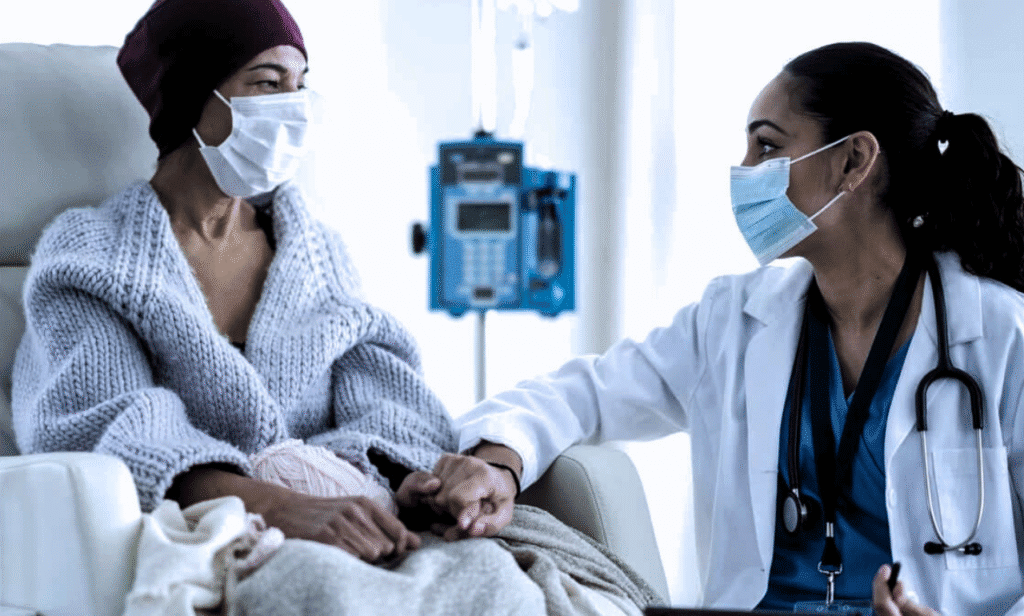
The face of cancer is changing, and the shift is worrying doctors and researchers around the world. For decades, the disease has been primarily associated with older age, a consequence of a lifetime of cellular wear and tear. Now, a new and perplexing pattern is emerging in medical data and clinic offices: a steady, unexplained rise in cancer diagnoses among adults under the age of 50. This isn’t about one type of cancer, but a broad increase across several categories, including colorectal, breast, stomach, and pancreatic cancers. The trend is so pronounced that leading medical organizations have begun revising screening guidelines, urging people to start looking for warning signs much earlier in life. For a generation often perceived as being in its prime, this presents a frightening and urgent health puzzle. The central question that scientists are racing to answer is simple yet complex: what is driving this alarming increase, and what can be done to reverse it?
The statistics paint a clear and concerning picture. Studies published in major medical journals have documented a global increase in early-onset cancers, defined as cancers diagnosed in adults between their late teens and their late forties. For example, colorectal cancer has become a flagship example of this trend. Once a rarity in young people, it is now the leading cause of cancer death in men under 50 and the second leading cause for women in the same age group in the United States. The numbers show a year-over-year increase of one to two percent in incidence rates for this and other cancers in younger adults, a small percentage that translates into thousands of unexpected diagnoses. This rise is not merely a result of better detection through screening, as it encompasses advanced-stage diseases that are typically discovered only when they cause symptoms. The data signals a real and growing change in cancer development, one that demands a scientific explanation.
Unraveling this mystery requires looking beyond a single cause. Researchers believe a combination of factors is likely at play, with modern lifestyles sitting at the center of the investigation. One leading theory points to the profound changes in our daily diets and physical activity levels over the last half-century. The widespread consumption of highly processed foods, sugary beverages, and diets low in fiber may be creating a pro-inflammatory environment in the body. Chronic inflammation is a known catalyst for cellular damage and can set the stage for cancer development over time. Coupled with increasingly sedentary behaviors, these dietary shifts contribute to rising rates of obesity, which is itself a significant risk factor for at least thirteen different types of cancer. The body’s metabolic system was not designed for the constant assault of ultra-processed ingredients and prolonged sitting, and the consequences may manifest as earlier disease.
The world we live in has also changed dramatically, and our bodies are interacting with a new set of environmental exposures from a very young age. Scientists are closely studying the potential role of endocrine-disrupting chemicals, which are found in thousands of everyday products from plastics to pesticides. These chemicals can interfere with the body’s hormonal systems, which regulate everything from metabolism to cell growth. While a single plastic container is unlikely to cause harm, the cumulative, lifelong exposure to a cocktail of these low-level chemicals is a source of deep concern. The question is whether this constant, low-grade exposure, beginning in utero and continuing through childhood and adulthood, is reprogramming our biology in ways that increase cancer vulnerability decades later. This theory is particularly compelling because it could explain why cancers are showing up in people with no family history or other obvious risk factors.
Another frontier of research lies within our own bodies—the gut microbiome. This vast ecosystem of trillions of bacteria, fungi, and viruses living in our digestive tract plays a crucial role in our immune function and overall health. Experts hypothesize that the Western diet, rich in processed foods and low in fiber, may be starving the beneficial bacteria in our gut. This can lead to a less diverse microbiome, which in turn may weaken the gut’s protective lining and immune defenses. A compromised gut environment could allow inflammatory agents to flourish and make it easier for cancer to initiate and grow. Some studies have already noted differences in the gut microbiomes of young colorectal cancer patients compared to healthy individuals, suggesting that the health of our internal bacterial community is a critical piece of the puzzle.
For young adults themselves, this trend creates a unique set of challenges and fears. A cancer diagnosis is always a life-altering event, but receiving one in your twenties, thirties, or forties comes with its own distinct hardships. This group is often in the midst of building careers, establishing relationships, and starting families. Treatment can derail these life plans, bringing fertility concerns, financial instability from medical bills and lost income, and a deep sense of isolation. Many report that their symptoms were initially dismissed by doctors who attributed abdominal pain, changes in bowel habits, or unexplained fatigue to stress, hemorrhoids, or irritable bowel syndrome because of their youth. This frequent dismissal can lead to critical delays in diagnosis, allowing the cancer to progress to a more advanced stage. The psychological toll is immense, forcing young people to confront their mortality at a time when they feel they should be at their most invincible.
In response to the rising tide of cases, major health bodies have taken action by lowering the recommended age for cancer screening. The guideline for a first colonoscopy, for instance, was recently lowered from age 50 to 45 for average-risk individuals. This is a direct and necessary effort to catch these cancers earlier in younger populations. However, screening is a reactive measure. The ultimate goal is prevention, and that requires a proactive approach rooted in a deeper understanding of the causes. Researchers are now launching large, long-term studies that will follow cohorts of young people for decades, tracking their diets, lifestyles, environmental exposures, and biological markers from a young age. The hope is that by comparing those who eventually develop cancer with those who remain healthy, scientists can pinpoint the specific triggers and mechanisms at work.
While the scientific search for answers continues, doctors are urging a renewed focus on the factors within our control. The message is not to instill fear, but to empower individuals with knowledge and actionable steps. Adopting a diet rich in whole foods—fruits, vegetables, and whole grains—while minimizing ultra-processed items is a foundational step. Incorporating regular physical activity into daily life is another powerful tool for reducing cancer risk and improving metabolic health. Being aware of your own body and advocating for yourself in the doctor’s office is equally crucial. Unexplained symptoms that persist, such as rectal bleeding, unexplained weight loss, a persistent lump, or changes in bowel habits that last for more than a few weeks, should never be ignored or dismissed because of age. It is essential to have a primary care physician who listens to your concerns and takes them seriously, and to seek a second opinion if you feel your symptoms are not being adequately addressed.
The rising incidence of cancer in younger adults is one of the most pressing and puzzling issues in modern medicine. It underscores that cancer is not a single disease with a single cause, but a complex interplay of genetics, environment, and lifestyle. The research is clear that our changing world is having a tangible impact on our health in ways we are only beginning to comprehend. Solving this mystery will require a concerted global effort, combining cutting-edge science with clinical vigilance and public awareness. For now, the medical community is sending a clear message to a younger generation: be aware of the trend, understand your body, and become an active participant in your own health. The journey to reverse this trend is just beginning, and it is a journey that will require everyone’s attention.
